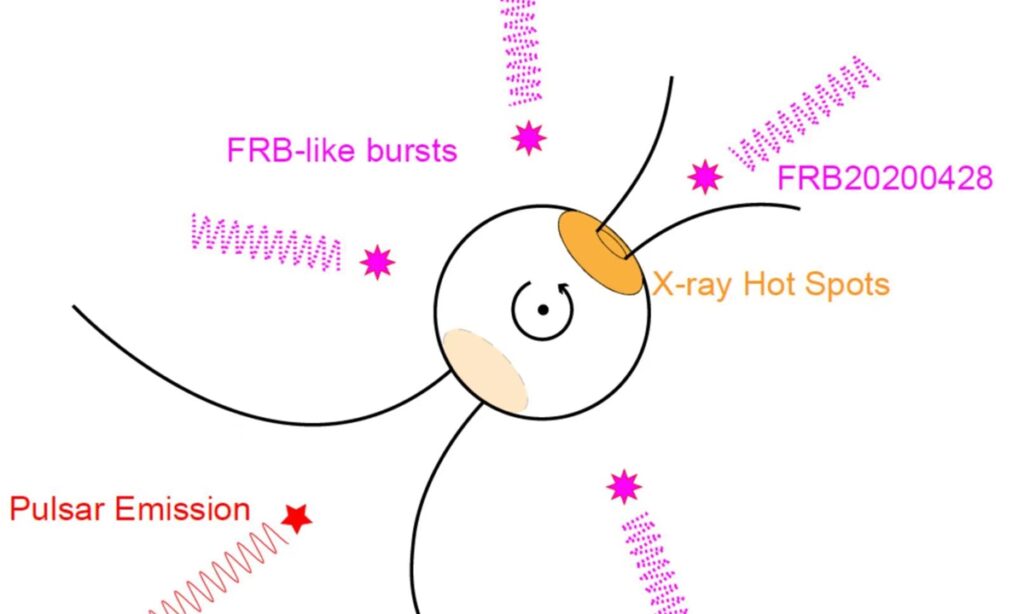The newest joint research project run by the Chinese and international scientists conducted via China’s 500-meter Aperture Spherical Radio Telescope (FAST), also known as the “China Sky Eye,” reveals the possible existence of different physical mechanisms between fast radio bursts (FRBs) eruptions and radio pulsar radiation, the Global Times learned from the Chinese Academy of Sciences (CAS).
FRBs are generally millisecond-level, extremely bright radio bursts from other galaxies in the deep universe. Radio telescopes around the world have discovered hundreds or even thousands of such bursts, with dozens of them repeating. FAST has conducted a series of in-depth observations on FRBs, revealing some of their energy characteristics and polarization properties. However, the specific mechanisms and the origin of FRBs are still one of the hottest research directions in the field of astrophysics, according to a release CAS sent to the Global Times on Monday.
Under the support of the FAST’s FRBs search and multi-band observation priority major project, scientists from the Chinese National Astronomical Observatory, Peking University, the University of Nevada, and the Institute of Astronomy and Astrophysics at Beijing Normal University carried out a study that focused on multi-band observation of the radio pulsar radiation phase of the Hanoi Fast Radio Burst Magnetar SGRJ1935+2154.
By comparing the pulsar radiation with its X-ray radiation profile phase, the team found that the phase distribution of the FRB eruptions is different from that of pulsars, with FRBs occurring at a more random phase. This work reveals the possible existence of different physical mechanisms between FRB eruptions and radio pulsar radiation, read the release.
The results were published in the international scientific journal Science Advances on Saturday.
SGRJ1935+2154 is a magnetar located in the Milky Way. It experienced a magnetar burst on April 28, 2020, and a very bright radio burst from this magnetar was captured by ground-based radio telescopes. The radio burst from this magnetar reached the brightness of certain extragalactic FRBs, making it the first known FRB phenomenon from within the Milky Way. Since 2020, this magnetar has sporadically experienced several brighter radio bursts similar to FRBs. These extremely bright radio bursts from magnetars provide important information for studying the mechanisms behind FRBs, according to the CAS.
In October 2020, the FAST priority major team conducted a month-long monitoring of SGR J1935+2154 and successfully detected the pulsar single-pulse radiation from this source. Although it is about 10 orders of magnitude dimmer than FRBs, the radio pulsar phase radiation from this source exhibits good regularity, with the pulse generation region accounting for less than 7 percent of the total rotational phase. Furthermore, through simultaneous X-ray observations, the team found that the radiation of the radio pulsar phase is opposite to the peak phase of the X-ray profile.
This is different from the phase distribution of other FRB-like bursts, which tend to be randomly distributed. This finding suggests that the generation mechanism of fast radio bursts is likely different from that of pulsar radiation. They may occur during explosive processes that can disrupt the stable structure of the magnetic field, thus appearing at various rotational phases. This conclusion is of great significance for understanding and establishing the mechanism behind FRBs, and it can also explain why repeating FRBs rarely show significant spin periodicity.
(Global Times)




